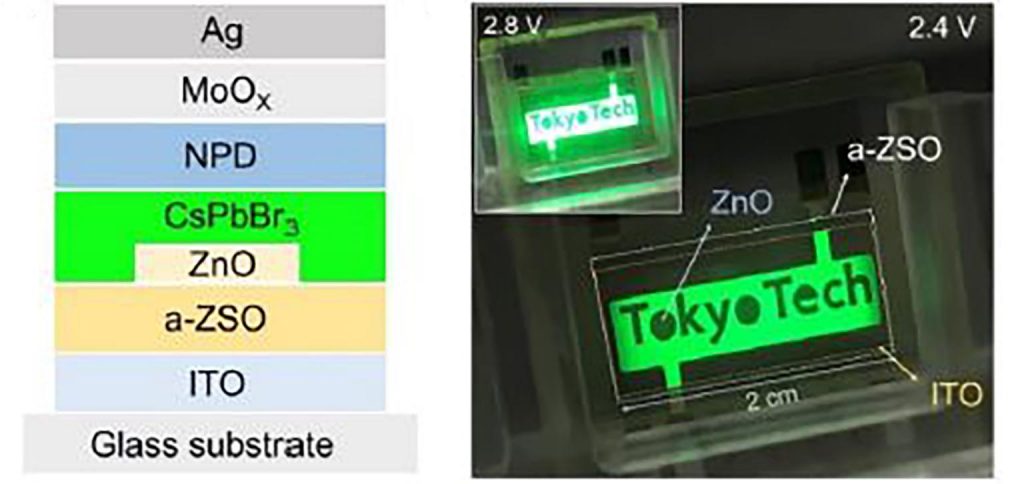From the Journal: Applied Physics Reviews
WASHINGTON, D.C., July 30, 2019 — Advances in organic phosphorescent materials are opening new opportunities for organic light-emitting diodes for combined electronics and light applications, including solar cells, photodiodes, optical fibers and lasers.
While low-dimensional luminescent materials, like the calcium titanium oxide mineral perovskite, have promising optical properties, their performance remains insufficient compared to conventional organic LEDs. A recent study, published in this week’s Applied Physics Reviews, from AIP Publishing, explores a new approach using an exciton confinement effect to optimize highly efficient perovskite LEDs.

CREDIT: Tokyo Institute of Technology
To achieve an efficient electroluminescent device, it must have a high photoluminescence quantum yield emission layer, efficient electron hole injection and transport layers, and high light out-coupling efficiency. With each new advance in emission layer material, new functional materials are required to realize a more efficient LED. To accomplish this goal, the authors of the study explored the performance of an amorphous zinc-silica-oxide system layered with perovskite crystals to improve the diode performance.
“We think that many people [are] too focused on an emission layer,” said Hideo Hosono, corresponding author on the study. “For a device, all layers are equally important since each layer has a different [but] crucial role.”
The amorphous zinc silicon oxide has a shallow tunable electron affinity, capable of confining excitons, but also high electron mobility to transport electrons. By layering the perovskite crystal and the amorphous zinc silicon oxide, the team developed a way to confine excitons and inject the electrons into the 3D perovskite layers efficiently. The energy-level alignment between the layers proved an ideal material for this purpose.
To validate their findings, the team tested their creation by producing blue, red and green perovskite LEDs, called PeLEDs. The green diode operated at the lowest voltage (2.9 volts at 10,000 candela per square meter) and was the most efficient (33 lumens/watt) and brightest (500,000 candela per square meter). While the team produced the maximum luminance for red diodes to date, the illumination remained too dim for practical use.
While these results show the promise of manipulating the electron transport layer material, challenges remain, including the stability of perovskite materials and toxicity of lead in the mineral crystal matrix. Despite these limitations, the results offer new opportunities to apply this approach to realize practical applications for perovskite LEDs in optoelectronic devices.
“For practical PeLEDs, new halide emitting materials with chemically stability and lead-free elements are highly needed,” said Junghwan Kim, corresponding author on the study. “If this issue is solved, the PeLEDs would be commercialized for practical electronics in the future.”
###
For more information:
Larry Frum
media@aip.org
301-209-3090
Article Title
Performance boosting strategy for perovskite light-emitting diodes
Authors
Kihyung Sim, Taehwan Jun, Joonho Bang, Junghwan Kim, Hidenori Hiramatsu and Hideo Hosono
Author Affiliations
Tokyo Institute of Technology, Nihon University
